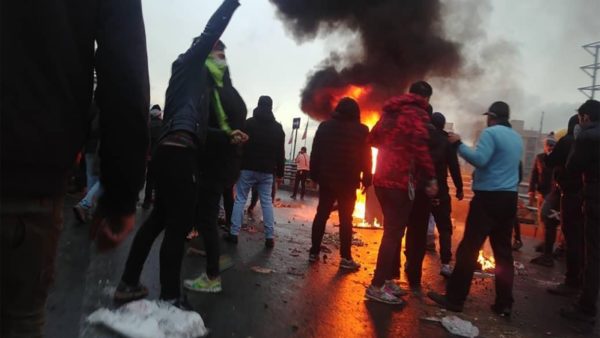
The Trump administration on Thursday accused Iranian security forces of killing more than 1,000 people in crackdowns against recent protests that have swept the country. That figure is significantly higher than previously estimated death tolls from human rights groups and others, and the administration did not present documentary evidence to back up the claim.
Brian Hook, the U.S. special representative for Iran, said the tally is based on a variety of reports coming out of Iran as well as intelligence analyses. In one incident in southwest Iran, Hook said the Iranian Revolutionary Guards Corps had mowed down at least 100 people with machine-gun fire. He said the U.S. had received and reviewed video of that incident in the city of Mahshahr.
That video was one of tens of thousands of submissions the U.S. has gotten since Secretary of State Mike Pompeo appealed last month for Iranians to submit evidence of atrocities by the authorities in putting down the protests, Hook said. In it, he said IRGC forces can be seen opening fire on protesters blocking a road and then surrounding those who fled to nearby marshlands where they were sprayed with bullets.
“In this one incident alone the regime murdered as many as 100 Iranians and possibly more,” Hook told reporters at the State Department. He did not display the video but said the actions it depicted corresponded to accounts of a brutal nationwide crackdown on the demonstrations, which started in response to gasoline price increases and rationing.
“We have seen reports of many hundreds more killed in and around Tehran,” he said. “And, as the truth is trickling out of Iran, it appears the regime could have murdered over 1,000 Iranian citizens since the protests began.” The dead include 13- and 14-year-old children, he said.
Iran’s mission to the United Nations did not immediately respond to a request for comment, and there was no immediate comment on state media in Iran.
There was no known public video that supported Hooks’ allegation of a massacre in Mahshahr, although he said the State Department had gotten more than 32,000 responses to Pompeo’s appeal for videos and other evidence using the encrypted messaging app Telegram that is popular in Iran.
Nor has there been any widely accepted claim matching Hook’s death toll of more than 1,000. Amnesty International believes at least 208 people have been killed and that the number could be higher. Iran has disputed that figure, but has refused to offer any nationwide statistics of the number of injuries, arrests or deaths from the unrest.
However, Hook’s numbers appear to match a figure put out late Wednesday by the Iranian exile group called the Mujahedeen-e-Khalq, which has paid President Donald Trump’s personal lawyer Rudy Giuliani for speeches at its events in the past.
The MeK alleged late Wednesday that more than 1,000 people had been killed. It published a list of 320 people it said it had identified so far as having been killed but did not provide proof.
Iran has alleged MeK supporters and those backing exiled Crown Prince Reza Pahlavi, the son of the country’s late shah, of being behind the unrest alongside foreign powers. It has not offered evidence to support those allegations.
In addition to the deaths, Hook said more than 7,000 protesters had been detained, with many sent to two prisons. Hook said that Pompeo had notified Congress on Thursday that both prisons would be hit with U.S. sanctions for gross human rights abuses. It was not immediately clear when those designations would occur.
Hook’s comments come as the U.S. steps up its “maximum pressure campaign” on Iran that it began after withdrawing from the landmark 2015 nuclear deal last year. That campaign has been highlighted by the imposition of increasingly tough sanctions and an increase in rhetoric critical of Tehran and its leadership.
As part of the pressure campaign, Hook announced that the U.S. is offering a reward of up to $15 million for information leading to the whereabouts of a top IRGC commander now believed to be supporting rebels in Yemen. He said Abdul Reza Shahalai was responsible for numerous attacks against U.S. forces in Iraq and had been behind a foiled plot to murder the Saudi ambassador to the United States in a Washington restaurant.
TIME/AP
Leave a Reply
You must be logged in to post a comment.